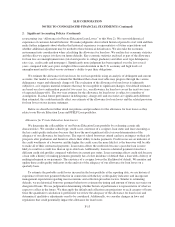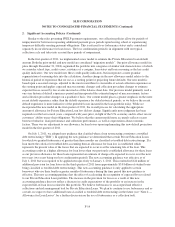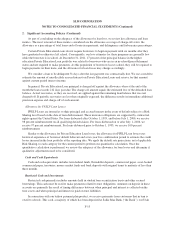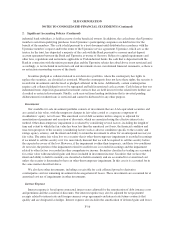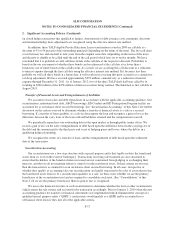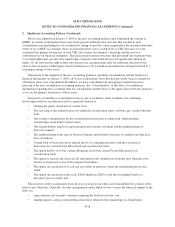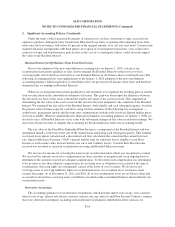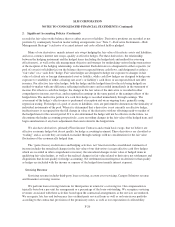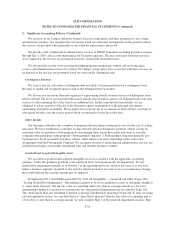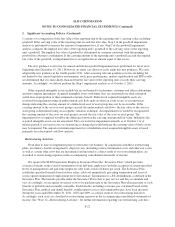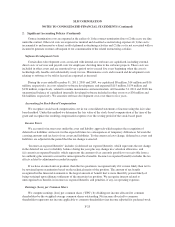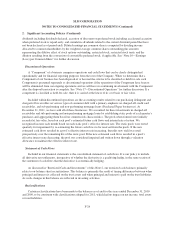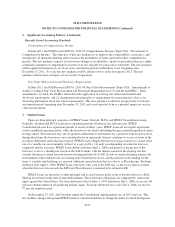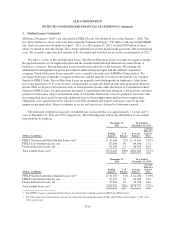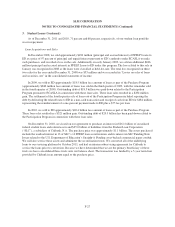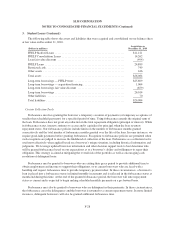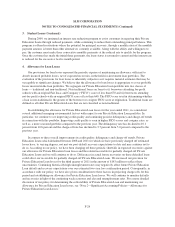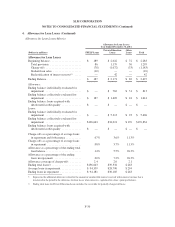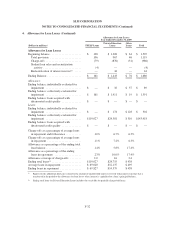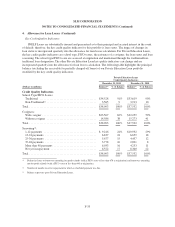Sallie Mae 2011 Annual Report Download - page 132
Download and view the complete annual report
Please find page 132 of the 2011 Sallie Mae annual report below. You can navigate through the pages in the report by either clicking on the pages listed below, or by using the keyword search tool below to find specific information within the annual report.SLM CORPORATION
NOTES TO CONSOLIDATED FINANCIAL STATEMENTS (Continued)
2. Significant Accounting Policies (Continued)
Contract termination costs are expensed at the earlier of (1) the contract termination date or (2) the cease use date
under the contract. Other exit costs are expensed as incurred and classified as restructuring expenses if (1) the cost is
incremental to and incurred as a direct result of planned restructuring activities and (2) the cost is not associated with or
incurred to generate revenues subsequent to our consummation of the related restructuring activities.
Software Development Costs
Certain direct development costs associated with internal-use software are capitalized, including external
direct costs of services and payroll costs for employees devoting time to the software projects. These costs are
included in other assets and are amortized over a period not to exceed five years beginning when the asset is
technologically feasible and substantially ready for use. Maintenance costs and research and development costs
relating to software to be sold or leased are expensed as incurred.
During the years ended December 31, 2011, 2010 and 2009, we capitalized $8 million, $14 million and $16
million, respectively, in costs related to software development, and expensed $115 million, $154 million and
$138 million, respectively, related to routine maintenance and amortization. At December 31, 2011 and 2010, the
unamortized balance of capitalized internally developed software included in other assets was $36 million and
$44 million, respectively. We amortize software development costs over three to five years.
Accounting for Stock-Based Compensation
We recognize stock-based compensation cost in our consolidated statements of income using the fair value
based method. Under this method we determine the fair value of the stock-based compensation at the time of the
grant and recognize the resulting compensation expense over the vesting period of the stock-based grant.
Income Taxes
We account for income taxes under the asset and liability approach which requires the recognition of
deferred tax liabilities and assets for the expected future tax consequences of temporary differences between the
carrying amounts and tax basis of our assets and liabilities. To the extent tax laws change, deferred tax assets and
liabilities are adjusted in the period that the tax change is enacted.
“Income tax expense/(benefit)” includes (i) deferred tax expense/(benefit), which represents the net change
in the deferred tax asset or liability balance during the year plus any change in a valuation allowance, and
(ii) current tax expense/(benefit), which represents the amount of tax currently payable to or receivable from a
tax authority plus amounts accrued for unrecognized tax benefits. Income tax expense/(benefit) excludes the tax
effects related to adjustments recorded in equity.
If we have an uncertain tax position, then that tax position is recognized only if it is more likely than not to
be sustained upon examination based on the technical merits of the position. The amount of tax benefit
recognized in the financial statements is the largest amount of benefit that is more than fifty percent likely of
being sustained upon ultimate settlement of the uncertain tax position. We recognize interest related to
unrecognized tax benefits in income tax expense/(benefit), and penalties, if any, in operating expenses.
Earnings (Loss) per Common Share
We compute earnings (loss) per common share (“EPS”) by dividing net income allocated to common
shareholders by the weighted average common shares outstanding. Net income allocated to common
shareholders represents net income applicable to common shareholders (net income adjusted for preferred stock
F-23


